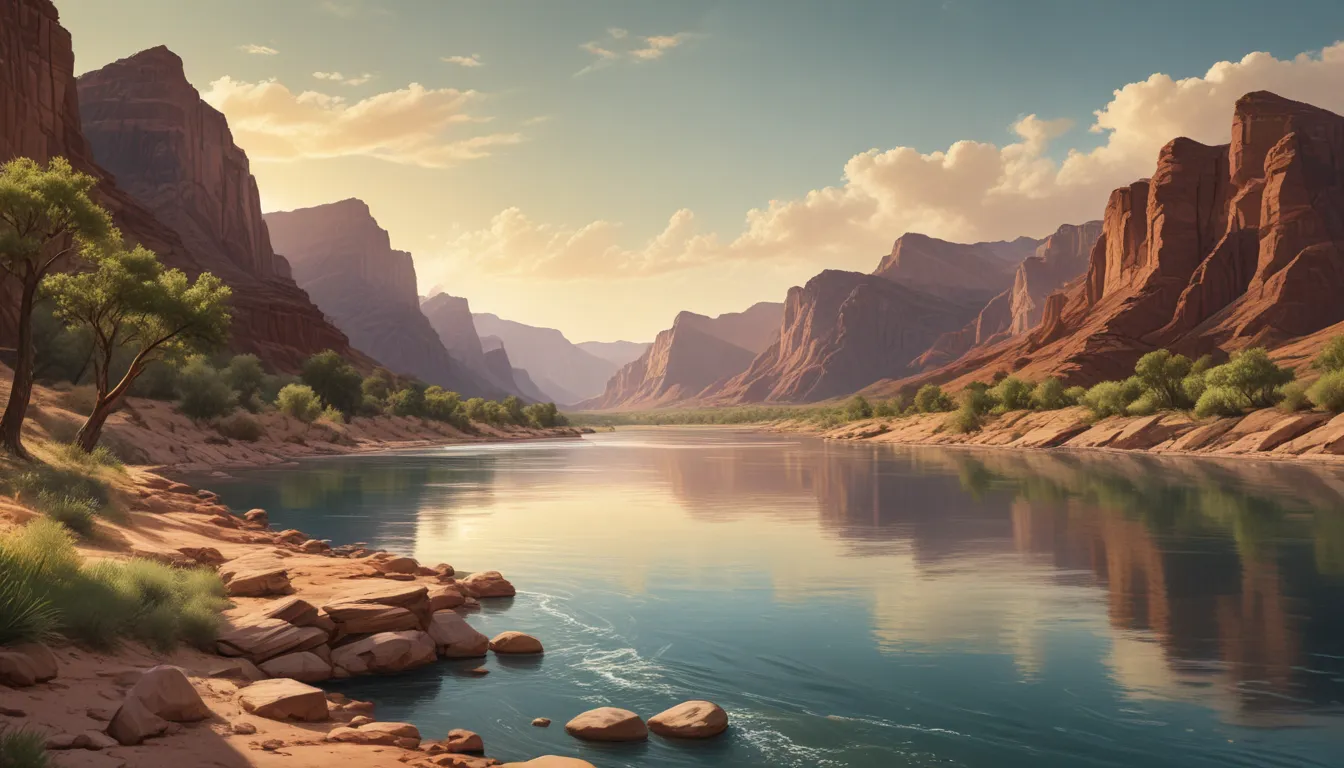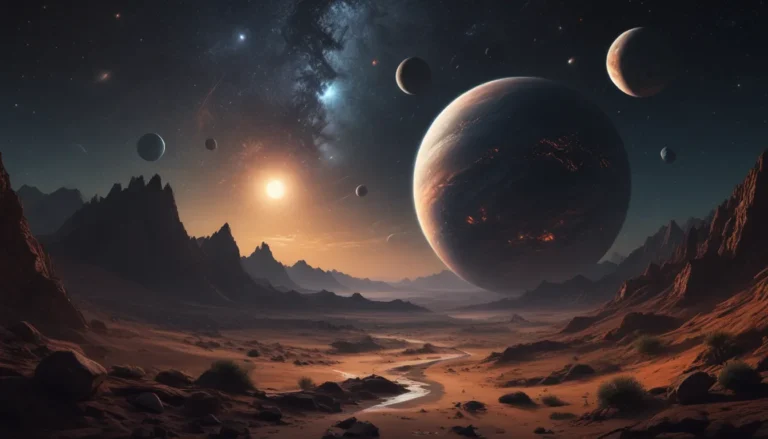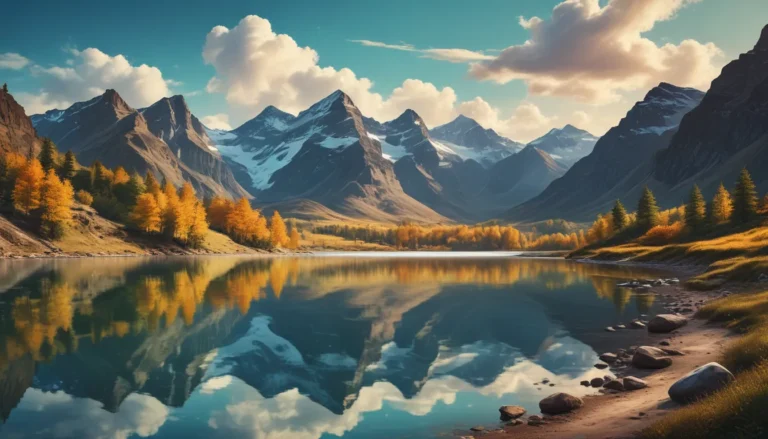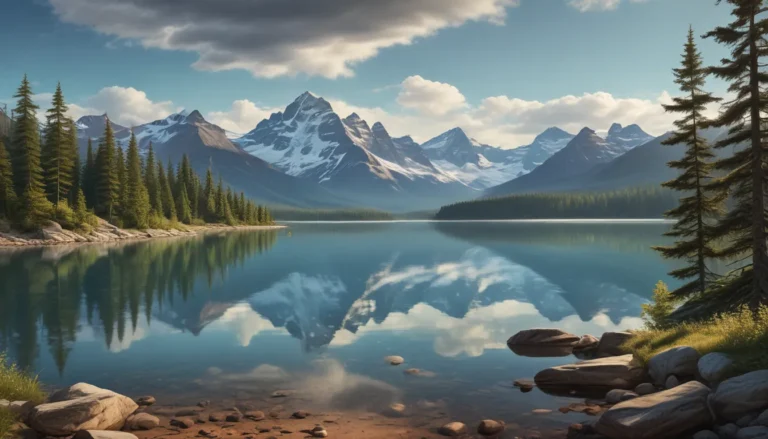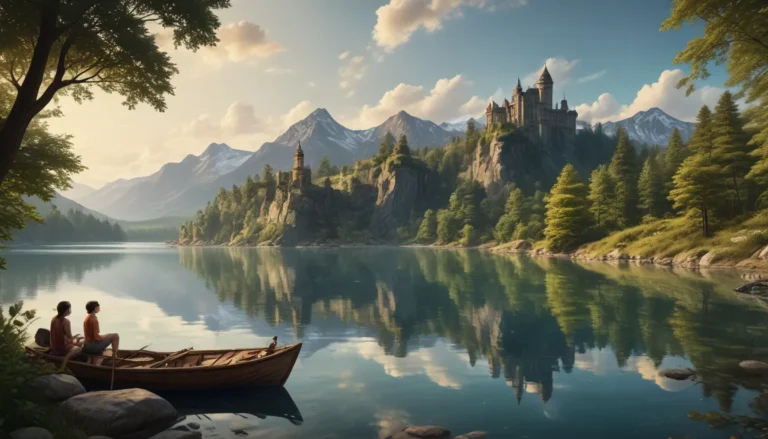The pictures we use in our articles might not show exactly what the words say. We choose these pictures to make you interested in reading more. The pictures work together with the words but don’t take their place. The words still tell you the important facts.
The Colorado River, a magnificent natural wonder stretching over 1,450 miles and meandering through seven U.S. states, is a vital lifeline in the arid southwestern United States. With its diverse landscapes, awe-inspiring canyons, and rich ecosystem, the river plays a crucial role in supporting over 40 million people, wildlife, and agriculture. Let's dive into the captivating world of the Colorado River and uncover 17 mind-blowing facts that will leave you in utter amazement.
The Grand Canyon: A Masterpiece Carved by the Colorado River
One of the most iconic features shaped by the Colorado River is the breathtaking Grand Canyon. Over millions of years, the river carved through layers of rock, creating a natural wonder that attracts millions of visitors annually. The sheer magnitude and beauty of the Grand Canyon stand as a testament to the river's power and influence on the landscape.
Winding Through Seven U.S. States: A Journey Through Diverse Landscapes
The Colorado River winds its way through seven states, from Colorado and Wyoming's snow-capped mountains to the arid deserts of Nevada, Arizona, and California. Its vast span connects a myriad of landscapes, offering a rich tapestry of natural beauty and ecological diversity along its course.
Harnessing Power: The Engineering Marvel of Hoover Dam
One of the most remarkable engineering feats of the 20th century, the Hoover Dam harnesses the power of the Colorado River to generate hydroelectricity. This iconic structure not only provides energy for millions but also serves as a symbol of human ingenuity and achievement.
A Lifeline for Millions: Supplying Water to Over 40 Million People
As a vital water source, the Colorado River sustains the lives of more than 40 million people in the southwestern U.S. Major cities like Los Angeles, Las Vegas, and Phoenix rely on the river for essential water supply, supporting agriculture, industry, and everyday needs in the region.
A Rich Ecosystem: Home to Diverse Wildlife
The Colorado River supports a diverse ecosystem teeming with wildlife, including endangered fish species like the humpback chub and majestic birds like the bald eagle. Its pristine waters provide a vital habitat for numerous species, contributing to the river's ecological significance.
Outdoor Adventure: Whitewater Rafting on the Colorado River
For thrill-seekers and outdoor enthusiasts, the Colorado River offers exhilarating whitewater rafting experiences. From milder sections ideal for beginners to challenging rapids that test seasoned rafters, the river provides an unforgettable adventure amidst stunning natural scenery.
Nourishing the Land: Irrigation for Agricultural Lands
With its extensive network of dams and canals, the Colorado River irrigates vast stretches of agricultural land, enabling farmers to cultivate crops in regions that would otherwise be too dry for farming. This vital water supply plays a crucial role in sustaining food production in the arid landscape.
Facing Challenges: Water Shortages and Sustainable Management
In recent years, the Colorado River has encountered significant water shortages due to increased demand and the impacts of climate change. This has led to conflicts over water rights and the pressing need for sustainable management practices to ensure the river's long-term viability and health.
A Recreational Haven: Enjoying Nature Along the Colorado River
From fishing and boating to camping and hiking, the Colorado River offers a host of recreational activities for outdoor enthusiasts. Its stunning landscapes and tranquil waters provide the perfect backdrop for unforgettable experiences in nature, attracting visitors from far and wide.
Preserving Fragile Ecosystems: The Colorado River Delta
The Colorado River delta in Mexico is a fragile ecosystem facing environmental challenges. Efforts are underway to restore and protect this vital habitat, which serves as a crucial stopover for migratory birds and supports a diverse array of plant and animal species.
Cultural Significance: A Connection to Native American Tribes
The Colorado River holds deep cultural and spiritual significance for many Native American tribes, serving as a vital source of sustenance, a sacred ceremonial site, and a connection to their ancestral lands. It is a symbol of heritage and connection to the natural world for these indigenous communities.
Inspiration for Art and Literature: Captivating the Hearts of Artists
Throughout history, the majesty and grandeur of the Colorado River have inspired countless artists and writers. From mesmerizing paintings to compelling novels, the river's beauty and significance have been immortalized in various forms of art, reflecting its profound impact on human creativity and imagination.
Regulating Flow: Managing Water Resources with Dams
To control water resources and prevent flooding, a series of dams regulate the flow of the Colorado River. Notable dams like the Hoover Dam, Glen Canyon Dam, and Davis Dam help maintain water levels and provide hydroelectric power, showcasing the river's role in human infrastructure.
Environmental Challenges: Addressing Threats to the River’s Health
Like many natural ecosystems, the Colorado River faces environmental challenges such as pollution, habitat degradation, invasive species, and water scarcity. These issues pose a threat to the river's ecological balance and the diverse species that depend on its waters for survival.
Symbol of Resilience: Connecting Communities and Nature
Above all, the Colorado River stands as a symbol of connection and resilience, bringing together diverse communities and sustaining life in harsh environments. It serves as a reminder of the delicate balance between humans and the natural world, emphasizing the importance of conservation and sustainable practices for the river's future.
Explore and Discover: Unveiling the Wonders of the Colorado River
As you embark on a journey through the captivating world of the Colorado River, be prepared to be amazed by its grandeur and significance. Marvel at the timeless beauty of the Grand Canyon, immerse yourself in thrilling outdoor adventures, and appreciate the vital role of the river in supporting diverse ecosystems and communities. Let the awe-inspiring facts of the Colorado River inspire you to cherish and protect this majestic waterway for generations to come.
Conclusion
In conclusion, the Colorado River stands as a testament to the power of nature and the enduring connection between humans and the environment. Its awe-inspiring landscapes, rich biodiversity, and cultural significance make it a remarkable natural wonder worth exploring and preserving. Let us continue to marvel at the grandeur of the Colorado River, recognizing the delicate balance required to ensure its sustainability and vitality for years to come.
FAQs
-
How long is the Colorado River?
The Colorado River spans approximately 1,450 miles, flowing through seven U.S. states and two Mexican states. -
What is the origin of the Colorado River?
The Colorado River originates in the Rocky Mountains of Colorado and Wyoming. -
What is the significance of the Grand Canyon in relation to the Colorado River?
The Grand Canyon was carved by the Colorado River over millions of years and is one of the most iconic natural wonders in the world. -
How does the Colorado River support local ecosystems?
The Colorado River plays a vital role in supporting diverse ecosystems, providing water and habitat for a wide range of plant and animal species. -
What is the major challenge facing the Colorado River?
Water scarcity and the overuse of the Colorado River's water resources are major challenges, necessitating sustainable management and conservation efforts. -
Are there any recreational activities associated with the Colorado River?
Yes, the Colorado River offers a wide range of recreational activities, including white-water rafting, fishing, hiking, and camping. -
What are some famous dams along the Colorado River?
Famous dams include Hoover Dam, Glen Canyon Dam, and the Parker Dam, which help regulate water flow and provide hydroelectric power. -
Does the Colorado River flow into the ocean?
No, the Colorado River does not flow into the ocean. It historically reaches the Gulf of California, but due to diversions and water usage, it rarely reaches the sea.
Embark on a journey of discovery and wonder as you explore the captivating world of the Colorado River, with its awe-inspiring landscapes, rich history, and ecological significance. Let the majesty of this iconic river inspire you to appreciate and protect the beauty of nature that surrounds us.
